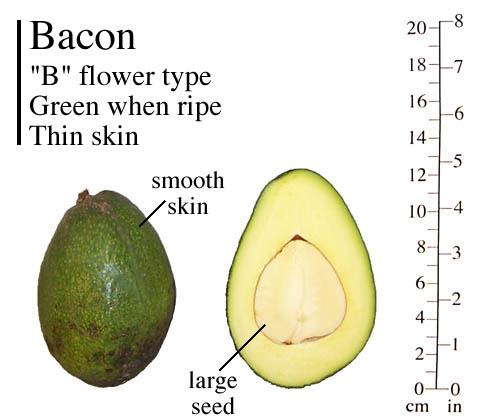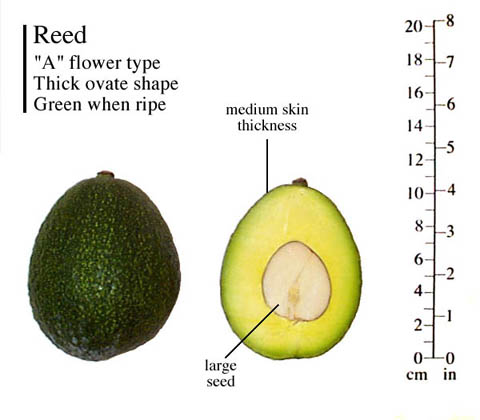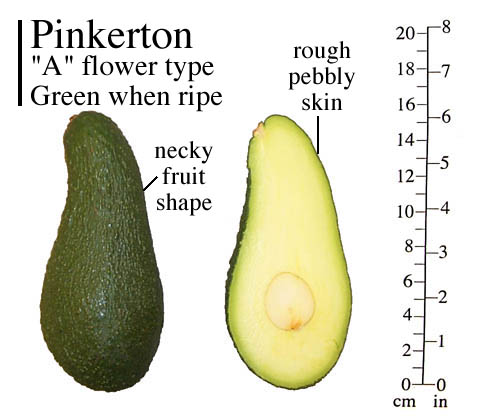[Avocado Industry]: Part 1: Avocado varieties over the world
11:21 - 27/12/2018
Avocado is the fruit that everyone has become familiar with and also the favourite fruit of many people. The avocado is an incredibly healthy food and loaded with important nutrients. However, do you know how many varieties of avocado across the world? Is there any difference of shapes between them? This column will provide you useful information for these question. Let's explore the avocado world.
<On the first part of this week, we will learn about the most popular varities in the avocado family. It encompasses five varieties: Hass, Reed, Bacon, Pinkerton and Fuerte.
- 1. Hass
Parentage: Hybrid Peels: Yes Seed Size: Medium Skin Texture: Pebbly Blossom Type: A Fruit Shape: Narrowly obovate to obovate Skin Color Unripe: Green Skin Color Ripe: Black Skin Thickness: Medium Average Fruit Weight oz: 6 to 14 %Ratio Seed/Skin/Flesh: 16:12:72 Additional Information: Originated in LaHabra, Heights, California, by Rudolph Hass. Introduced in 1936. Oval/pear shaped fruit.The leading commercial variety in California. One of the longest harvest seasons usually begining in February in Orange County, Ca. Excellent flavor and shipping qualities. Hass is often used as a control in field testing of other varieties. | 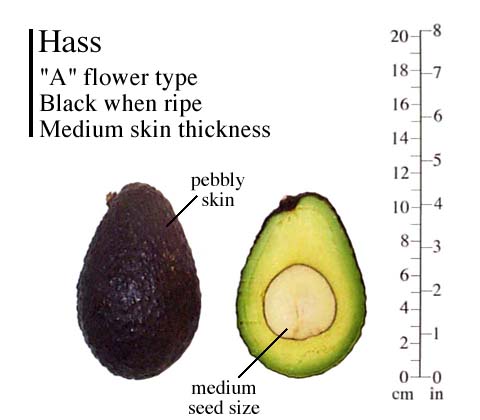 |
- 2. Bacon
Parentage: Mexican Peels: Not easily Seed Size: Large Skin Texture: Smooth Blossom Type: B Fruit Shape: Obovate Skin Color Unripe: Green Skin Color Ripe: Green Skin Thickness: Thin Average Fruit Weight oz: 10 to 18 %Ratio Seed/Skin/Flesh: 18:7:75 Click on image to enlarge Additional Information: Originated in Buena Park, California, by James Bacon. Introduced in 1951. Flesh has an unusually pale yellow/green color. Oil content high. Matures Nov. to Jan. in Orange County and Dec. to Mar. in Ventura County, Ca. Consistant,heavy producer; frost tolerance excellent. Bacon has a commercial background. Large trees. |
|
- 3. Reed
Parentage: Guatemalan Peels: Yes Seed Size: Large Skin Texture: Medium Blossom Type: A Fruit Shape: Spheriod Skin Color Unripe: Green Skin Color Ripe: Green Skin Thickness: Medium Average Fruit Weight oz: 17 to 24 %Ratio Seed/Skin/Flesh: 17:11:72 Additional Information: Originated in Carlsbad, California, by James Reed. Introduced in 1960 from a chance seedling planted in 1948. Fruits ripe May to September according to most literature. At South Coast Field Station (Orange County, Ca) we have found it to be better later in the year. Sets fruit yearly. Fruit may remain on tree for a relatively long time after reaching maturity. Resistant to salt burn. Cold tender. |
|
- 4. Pinkerton
Parentage: Hybrid Peels: Yes Seed Size: Small Skin Texture: Rough-pebbly Blossom Type: A Fruit Shape: Pyriform Skin Color Unripe: Green Skin Color Ripe: Green Skin Thickness: Medium Average Fruit Weight oz: 9 to 18 %Ratio Seed/Skin/Flesh: 10:13:77 Additional Information: Commercial variety. Harvest begins in January in some commercial areas. High oil content. Medium slightly spreading tree. Hardy to 30 degrees.
|
|
- 5. Fuerte
Parentage: Hybrid Peels: Yes Seed Size: Large Skin Texture: Medium Blossom Type: B Fruit Shape: Obovate Skin Color Unripe: Green Skin Color Ripe: Green Skin Thickness: Medium Average Fruit Weight oz: 9 to 16 %Ratio Seed/Skin/Flesh: 15:10:75 Additional Information: Introduced as budwood in 1911 from Atlixco, Puebla, Mexico. A hybrid Mexican variety that is ready to pick in November and is good through March. Hangs on the tree well. A long time California commercial variety valued for its winter season and its B blossom type. Skin thickness is medium thin. Seed size is medium large. | 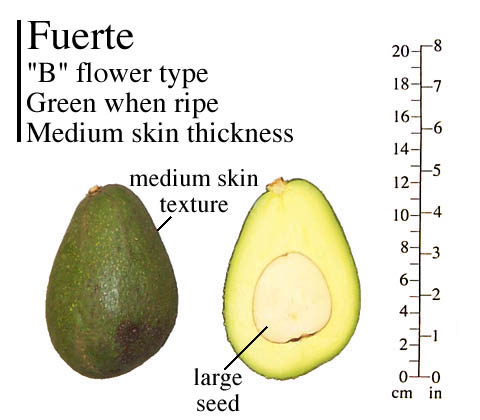 |
| Nguồn: Avocadosource.com |




